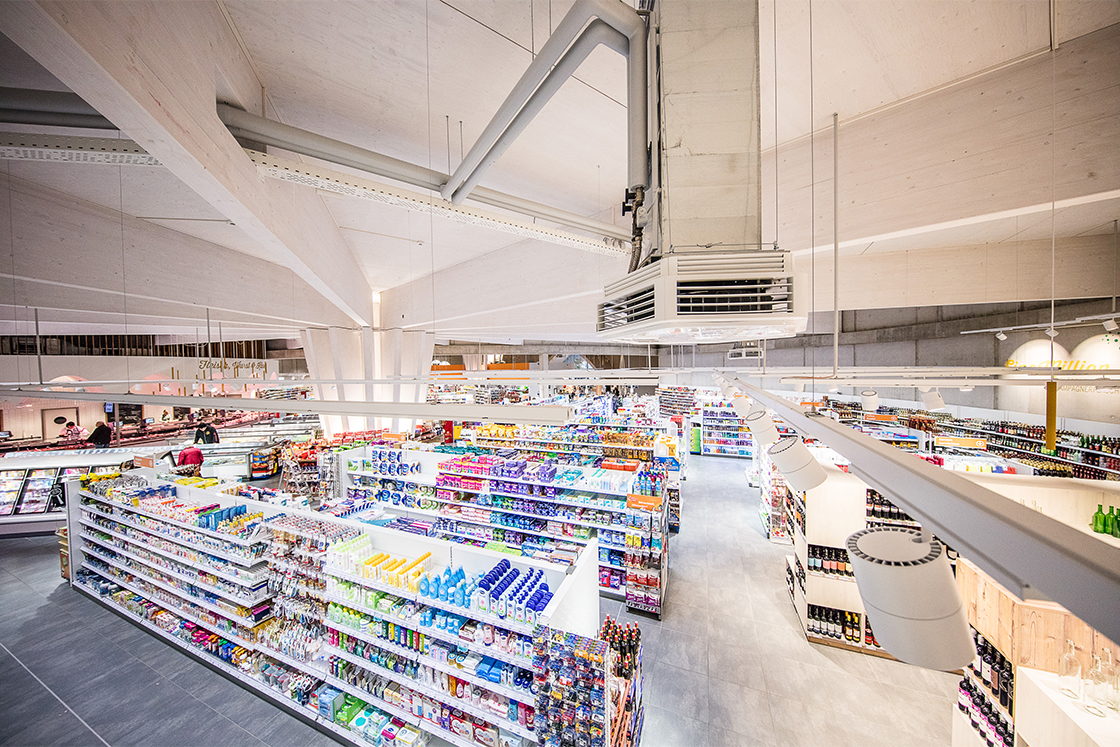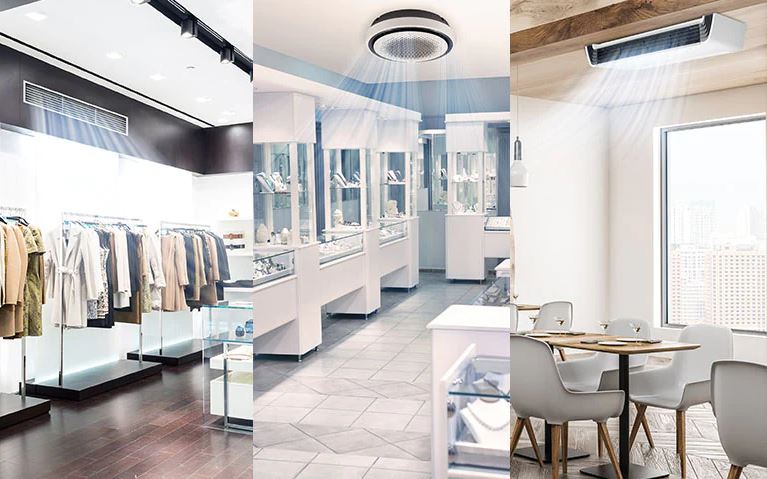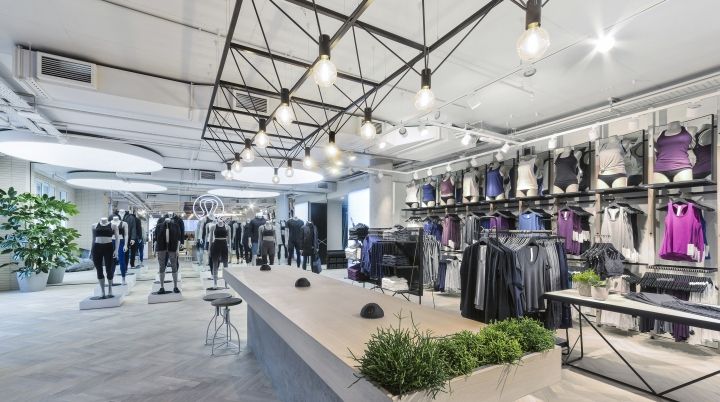Currently, there are increasing cases of the recurrent waves of the COVID-19 pandemic across the world. These waves are mainly

Introduction
Retail facilities use 5 times more energy per sq. ft. than any other commercial space. This is because they depend on HVAC systems to operate successfully. Besides, the HVAC design for retails is considered complex. This is because they house a mix of unique applications under one roof. And each application might have specific needs to cool, heat, and ventilate that space.
For instance, one part of the retail may contain refrigerated cases providing a stream of cool air. Another part may contain cooking equipment producing heat that should be exhausted. In both cases, HVAC systems ensure customer safety and better indoor air quality. Moreover, they’ll prevent the products from spoiling, shrinking, or becoming moldy.

Benefits of HVAC systems in Retails and stores
Retail establishments include; enclosed malls, stand-alone facilities, and strip malls. These commercial spaces consume a lot of energy annually. Luckily, retailers can decrease energy expenses without affecting their businesses operations. The most effective way of achieving that is to upgrade or install HVAC systems in their facility. It will also benefit retailers with;
Retail facility HVAC system design & Selection
There are things you should consider when creating the HVAC design for retails. For instance, the unit placement and room shape can affect the air movement. That said, here are some systems you can install in your retail store;
These systems are often used in high-end retail facilities. They’re aesthetically appealing but expensive. Nonetheless. They’re very efficient in keeping any sized facility and its occupants comfortable.
Wall-mounted AC units are ideal for most retail shops in California. They’re cost-effective and easy to install. Besides, their high level; wall placement and long, thin design conserves space. This keeps them aesthetically appealing while allowing them to function efficiently.
Unlike, wall-mounted units, these systems are completely hidden in the ceiling. On top of that, they’re designed to keep your retail facility comfortable and occupants happy.
These types of ACs have 1 cooling unit and 1 external condenser box. This basic design is suitable for cooling smaller retail shops in California. Better still, they’re very cost-effective and require low maintenance to function.
These systems are the best option for retail and stores with many rooms. Thanks to their ability to cool more than 1 room. They have 1 external condenser box and multiple internal units. This gives them a unique appearance and exceptional performance.
These systems are commonly used for retail facilities with much larger floor plans. They come with 1 external condenser box and 2-4 internal cooling units. Their design conserves space and ensures that large retail; spaces are well treated.
Interior design and HVAC design for retails
HVAC systems are very vital to retail spaces. For instance, they make the retail spaces comfortable. Unfortunately, these systems may appear cumbersome, bulky, and unappealing. So, interior designers have to develop creative ways to incorporate them into the décor. This includes finding ways to conceal HVAC systems’ functional components in retail buildings.
Retail spaces refer to department stores, multi-use complexes, small stores, and shopping malls. Generally, the design and selection of HVAC in these facilities depend on economics/ finance. HVAC Design for Retails will be impacted by the initial costs. In larger facilities, other factors like operating costs will influence the design.
Typically, retail buildings that line streets have display glass in the front part. This may lead to high peak solar effects. And on cold days, such stores experience greater heat loss. The interior design of such storefronts must balance higher heating and cooling requirements. In colder regions, for instance, heating units may be needed at the store entrances.
For shopping mall outlets with interior-facing glass, consider air balance and exterior load. That’s because the store’s entrances are always open for the outgoing and ingoing traffic.
HVAC units move air throughout the building. Then return it to cooling/ heating sources through the system. These systems need space for mixing boxes piping and ducts. These are some of the components that interior designers need to consider.
Interior design should consider HVAC components that interfere with ceiling items & light fixtures. While window dressing should work around air conditioning and heating load. Also, thermostats, registers, and grills can be positioned to complement furniture arrangements.
When designing AC units for retail stores, locations, type and size need to be considered. This will allow them to supply adequate outdoor air to retail spaces. Hence minimizing or eliminating odors.
Retail stores may also use central-station or unitary AC systems. Central station units use hot water heating coils and chilled water cooling coils. They also have filters and fans. These air conditioning systems must have adequate space around them for varying loads. However, that will depend on the retail store’s use and occupancy. To reduce the visual impact of AC systems, install them on the roof and ceiling. You can also install them in the mechanical design doe retails. Installing them on the rooftop reduced noise. Not to forget that the cost of installing is lower than installing them in the sales area. Besides, the system is much easier to operate and maintain in that location.
Another great solution is to use many HVAC units to air condition large retail spaces. This will maintain comfort levels if any part of the system malfunctions. Better still, this will require less ductwork.
Some HVAC system components must be installed in plain view. That’s the only way they can ensure efficient performance. Such components are a challenge to interior décor. Luckily, you can use a few tricks to make them blend with the rest of the décor. This includes; installing them near the ceiling or in a false beam’s recess. Also, you can cover the HVAC elements or even build furniture around them.

Final Word
Innodez Design and Engineering helps the retail with all their HVAC system needs. This includes HVAC design for supermarkets, maintenance, inspections, audits, repairs, and replacement. Wes ensures that your retail store gets the best HVAC system for your customers, staff, and budget. Besides, having an efficient HVAC system will increase your sales significantly. Call us today!
About Author
InnoDez